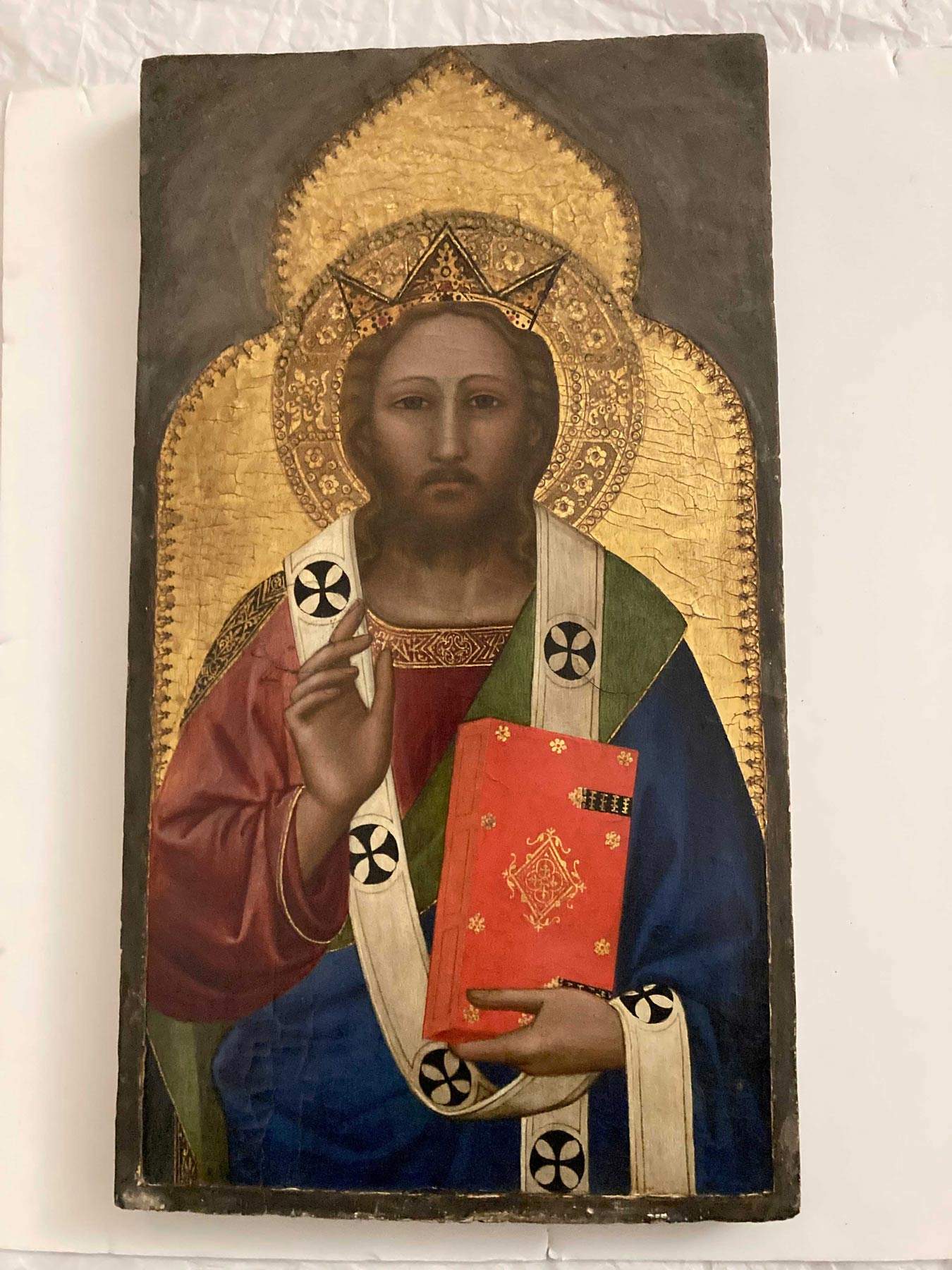A new 14th-century panel arrives at the Accademia Gallery in Florence, adding to the Florentine museum’s collection of 14th-century and Late Gothic paintings: it is the splendid Christ Blessing attributed to Nardo di Cione (Florence, 1320 - 1366), confiscated by the Operational Department of the Carabinieri Cultural Heritage Protection Command.
The painting, a tempera and gold on panel, was finally assigned to the Accademia Gallery in Florence last December. The work by Nardo di Cione, considered one of the greatest exponents of Florentine art of the mid-14th century, was owned by a well-known religious congregation and kept at its Roman headquarters, where, in 2003, in an artificial procedure, it was sold to an art dealer. Given its importance, it was made clear in the purchase contract that the valuable painting was the private property of one of the members of the congregation, apparently making the alienation seemingly lawful, which otherwise could not easily have been done by an ecclesiastical body, since it is a cultural asset protected by law.
From the investigation, coordinated by the Public Prosecutor’s Office at the Court of Rome and conducted by the Antiques Section of the Operational Department of the Carabinieri Cultural Heritage Protection Command, it was reconstructed how, the following year (2004), the painting was sold to a London gallery owner and expatriated without the required documentation. These elements made it possible to request the seizure of the work from the competent English authorities. Meanwhile, the Court of Rome ordered its confiscation, and in January 2018, the painting was repatriated. The court order became enforceable in June 2019 and, after formal assignment by MIBACT, it will soon be on public view in the Florentine museum’s collections.
The Christ Blessing attributed to Nardo di Cione, despite the stand-alone painting frame with which it arrived in the Gallery, was part of a polyptych, located at the apex of the central compartment. The work is currently undergoing a careful analysis of its conservation history and study by Gallery staff. The panel appears to be in a good state of preservation, showing small and diffuse pictorial restorations, while the upper part is a remake with added wooden support.
Historical information about Nardo di Cione is rare, despite the fact that he was considered one of the greatest living painters of his time. We do know that he was active along with his brothers Matteo and Jacopo di Cione in the flourishing workshop of the elder Andrea, known as l’Orcagna, and was engaged with the latter in various important commissions such as the frescoes in the Strozzi Chapel in the church of Santa Maria Novella in Florence around the middle of the 14th century. Although the Blessing Christ is one of his least plastically accentuated works, Nardo is actually quite different from his brothers. Compared to his better-known brother Andrea, his figures are gentler in physiognomy and nuance, with a deep pictorial tenderness.
“Thanks to the renewed collaboration with the Operative Department of the Carabinieri Command for the Protection of Cultural Heritage,” says Cecilie Hollberg, director of the Accademia Gallery, “a precious gold background, depicting the Redeemer in the act of blessing, enriches our museum’s collections with yet another work by the di Cione brothers that documents the remarkable level of quality of 14th-century Florentine painting. The Accademia Gallery already preserves the splendid triptych of the Trinity by Nardo di Cione.”
Already in November 2018, the Operational Department of the Carabinieri Tutela Patrimonio Culturale Command had found and entrusted the Accademia Gallery with two other important gold backgrounds: the first depicting Saints Jerome and Julian, from around 1358, attributable to Niccolò di Pietro Gerini, among the leading exponents of the so-called Neo-Giottism; the second with the Madonna of Heavenly Humility, from around 1400, attributable with absolute certainty to the Master of the Bracciolini Chapel.
 |
| Florence, Academy Gallery gets valuable panel confiscated after illegal sale |
Warning: the translation into English of the original Italian article was created using automatic tools. We undertake to review all articles, but we do not guarantee the total absence of inaccuracies in the translation due to the program. You can find the original by clicking on the ITA button. If you find any mistake,please contact us.